First, a little background information…
The Panama Canal is an artificial waterway that cuts across Panama, joining the Atlantic and Pacific Oceans. It is 82km (51 miles) long and is a major thoroughfare for ships both big and small.
Work on the Canal was started by France in 1881, but this was stopped due to financial issues and a very high worker mortality rate. The United States took over the project in 1904 and the Canal was officially opened in 1914. The US continued to control the Canal and the surrounding land until 1977 when it was finally handed over to Panama. In 2016, a new, third, wider lane was completed to allow for the much larger (New Panamax) ships to transit.
The Canal significantly reduces the passage time for ships travelling between the two oceans and, over the years, the number of transits has increased dramatically. From about 1000 in 1914 to around 14,000 currently. This takes some organising and all transits through the Canal are regulated by the Panama Canal Authority.
Being part of the World Cruising Club World Rally made this process so much easier for us. The WCC liaised with the authorities through an agent and between them the necessary processes were followed. The PCA organised a ‘special lockage’ for the fleet to travel through the Canal. This meant that, instead of going through the locks a few boats at a time with a larger vessel, the fleet was able to go through together in two transits. To do this, the boats needed to be rafted together in twos/threes. Each Rally boat was visited by an official who came on board to take measurements and check that all of the boat systems were working correctly. Using the information that they collected, we were notified of our groupings for the transit. Escapade of London was to be in Transit 2, rafted together with monohull, Brainwave and trimaran, Chica 3.
As the big day approached, final preparations were made. The agent supplied each boat with large lines and fenders and each boat finalised arrangements for their crew. Canal regulations state that each of our boats needed to have four line handlers, a skipper and a canal advisor. As there are only two of us on Escapade, we needed three more line handlers. Another benefit of being with the ARC was that there were other boats who also needed extra hands. I went on board Tam Lin of Gloucester in Transit 1 and in return David and Sonja joined Escapade for our transit. We also managed to get our friend Steve from Cerulean to join us as well. He had already been through the canal three times, so his experience was invaluable.
Wednesday 15th March was our transit day. Our line handlers arrived at Shelter Bay Marina in the late morning, having caught a mini bus up from Panama City where their boats were moored.
After several delays, the launch with the advisors finally arrived at the marina and, at just after 4pm, the 16 Transit 2 boats set off.
As soon as we had left the marina, our advisor, Edward, checked our lines and fenders and discussed our plan for rafting with our fellow boats. Edward wanted to know which lines we were using and who would be passing lines to who. On the other boats, other advisors were doing the same. Once they were all happy that everything was in order, the convoy of boats set off for a slow motor, under the Puente Atlantico (Atlantic Bridge) to the Gatun Locks.
Gatun Locks are a flight of three locks, 2km (1.25 miles) long, rising 26m (85feet) to the man-made Gatun Lake. On approaching the locks, rafting began and, raft by raft, we headed into the first lock. It was just starting to get dark and the lock side looked even more imposing all lit up. All onboard were alert and had their separate jobs to do. Skippers remained at the wheels; the centre boats providing the forward motion for the rafts and the outer two ‘steering’. The line handlers were ready to catch the lines thrown to them by the dock staff. The dock handlers have thin lines with a weighted ‘monkey’s fist’ on the end. They swing them around and throw them like lassoes towards the waiting boats. The line handlers must then tie these to the heavier lock lines to be passed back ashore. These lines are tied off ashore and the line handlers on the boats adjust the tension on them to keep the rafts square as the water pours in (or out) of the locks. All actions were carefully watched by the advisors. It was an exciting process for us and must have also been an impressive sight for the canal workers as many of them took photos of the locks full of smaller sailing boats.
The process was repeated a second and third time until, at 9.30pm, the final set of gates opened allowing us into Gatun Lake. Here the rafts split and individual boats motored to the large mooring buoys which would be our overnight stopping place. One by one the boats moored and, once all were safely attached, the advisors bid their goodbyes, leaving the crews with the chance to reflect about the day’s adventures over a well earned meal and a couple of celebratory beers.
The following morning, the sun rose early and it was a beautiful sight to see the calm, still waters of Gatun Lake. There was a huge temptation to have an early morning swim, but no one did, due to the presence of crocodiles in the area! Instead, an early morning cup of tea was in order.
The advisors arrived at 9am and the convoy set off across Gatun Lake towards Pedro Miguel Lock. Motoring cross the 24km (15 miles) lake, gave us chance to study the landscape around us, all of the time keeping to the edge of the channel to avoid the container ships and cruise liners also on transit. Our advisor explained to us about the transit toll system. This is generally based on tonnage, but also includes elements linked to boat use. The tolls range from almost half a million US$ (large cruise liners/container ships) to 36 cents (American Richard Halliburton who swam it). The tolls generate US$2.6 billion per year.
At 3pm, it was again time to raft up and prepare for the transit through Pedro Miguel Lock. This is a single lock 1.4km (7/8 mile) long which took us 9.4m (31 feet) down to Miraflores Lake. The lake is only 1.8km (1 1/8 mile) long, so the rafts stayed together for the motor to the 2 stage flight Miraflores Locks. These final locks took us down the remaining 16m (54 feet).
Travelling through these locks in the daylight was a completely different experience than in the previous evening. It was made all the more special knowing that family and friends were watching the live feed and had a good chance to spot us.
Finally, the gates from Miraflores Locks opened and the rafts split for the last time ready to head for the home run towards La Playita Marina.
The final milestone of the day was just before dark – passing under the Bridge of the Americas and into the Pacific.
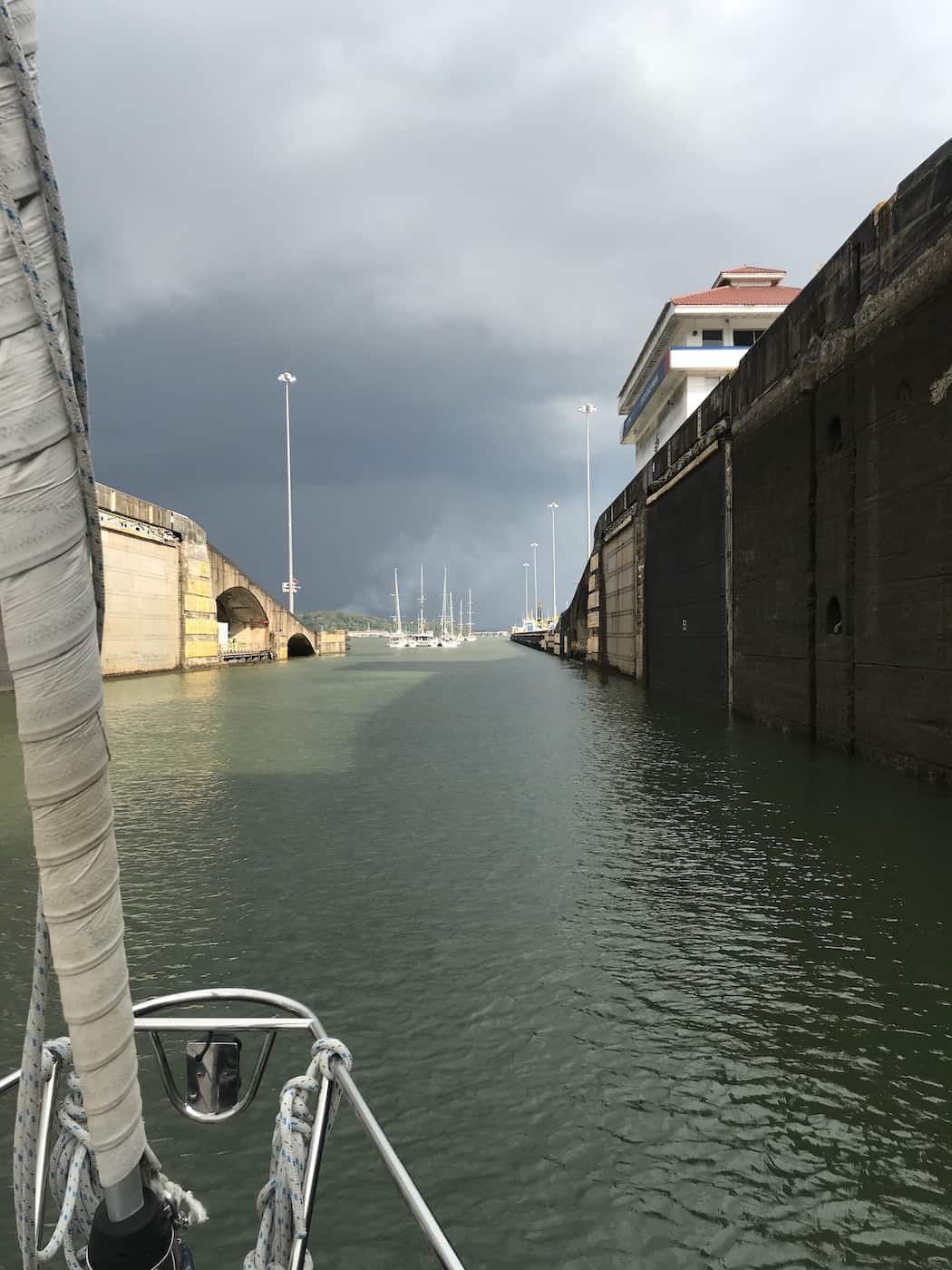
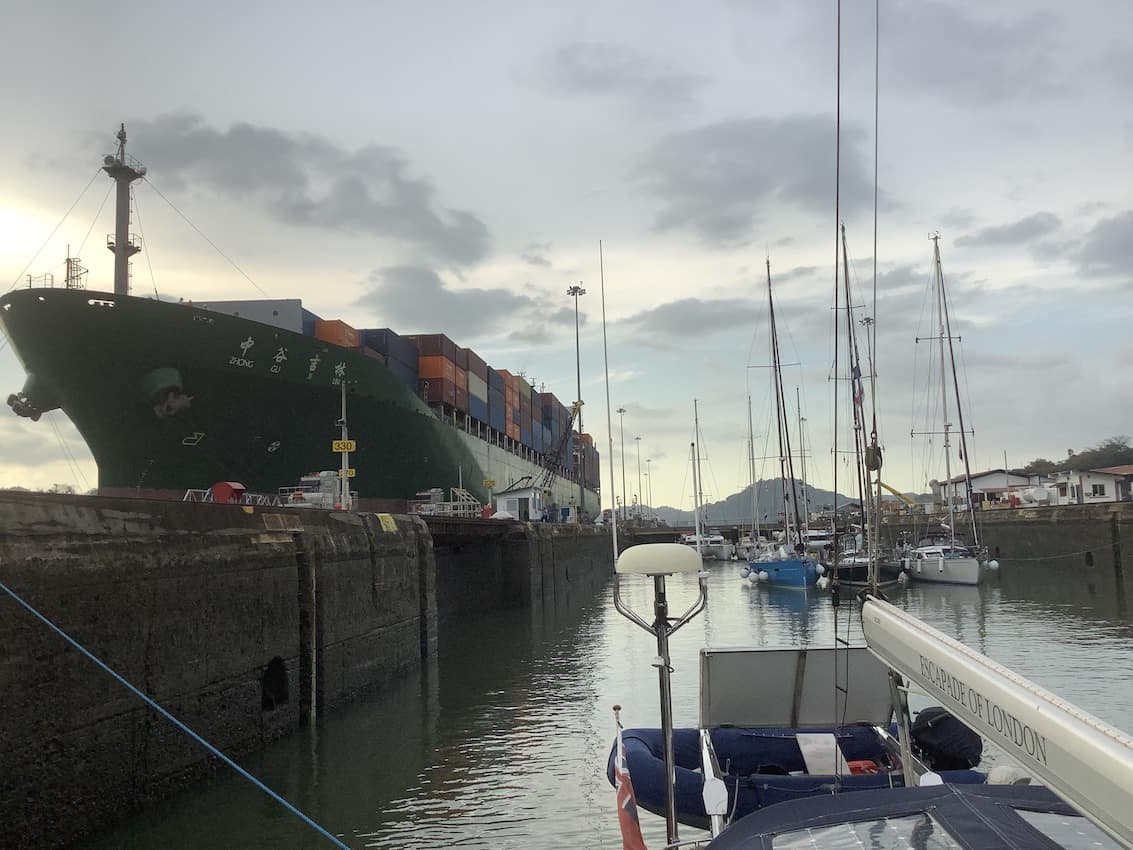
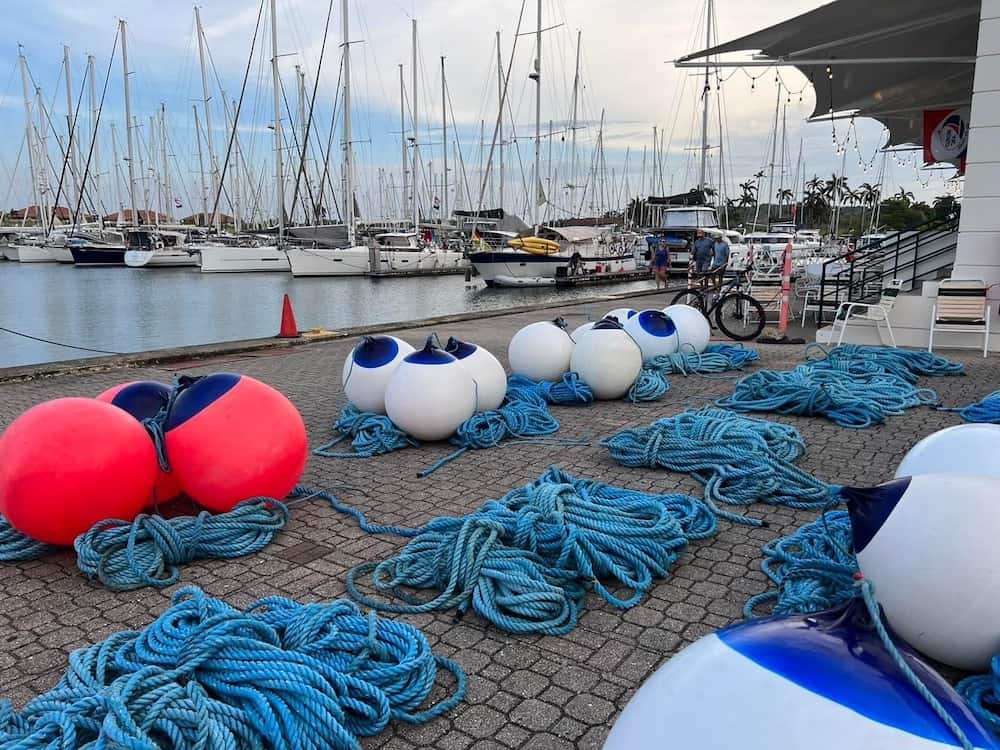
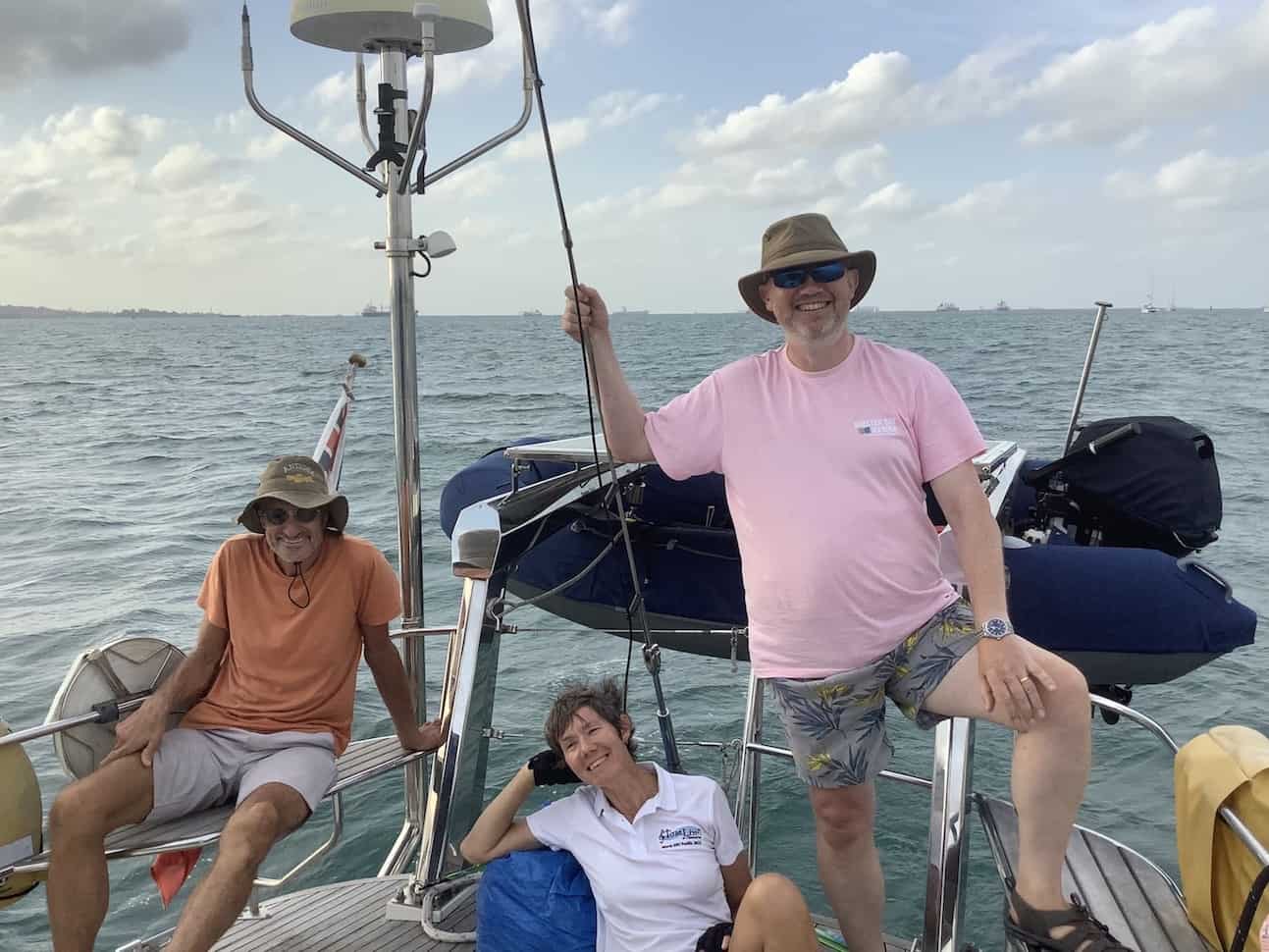
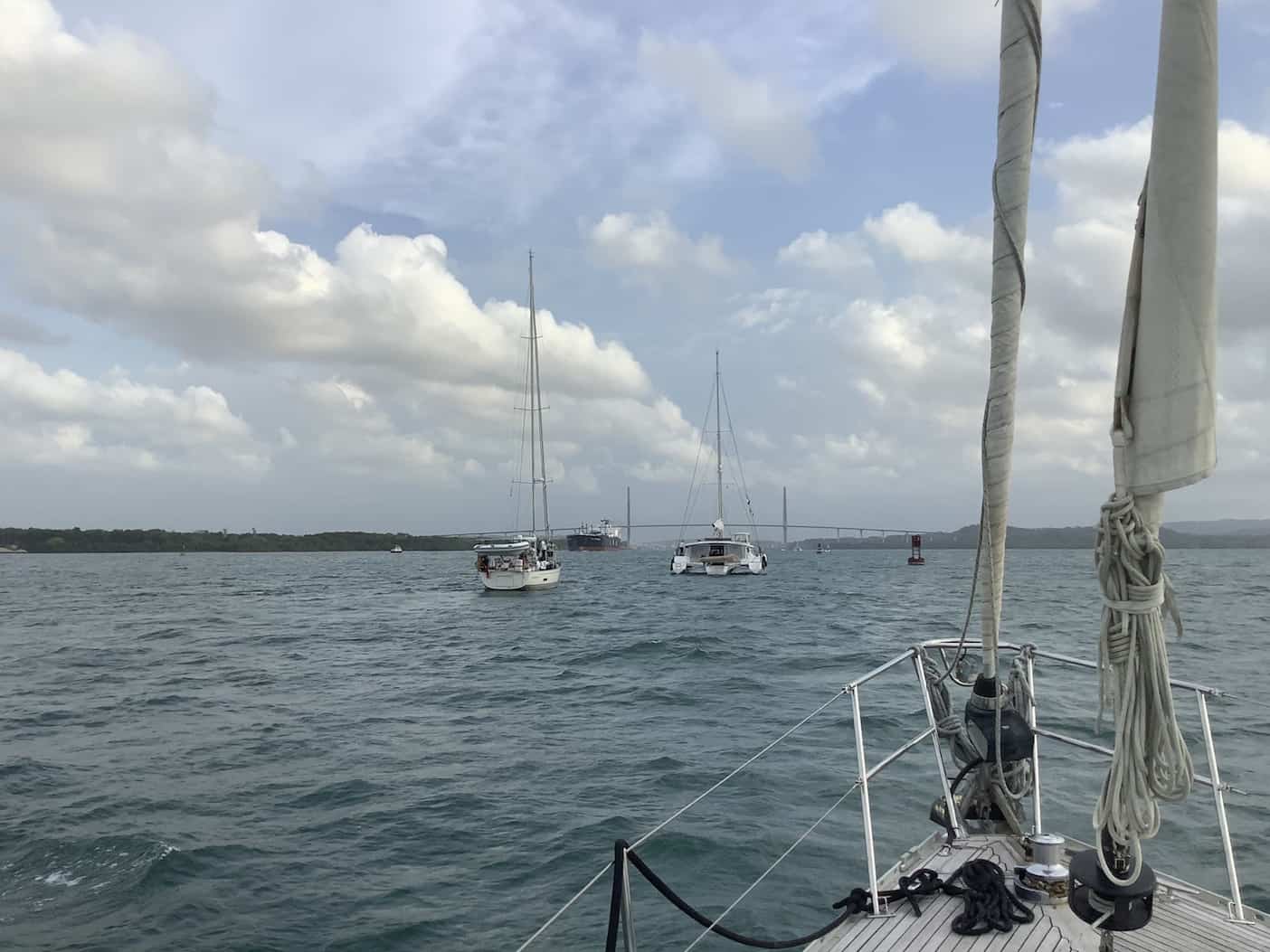
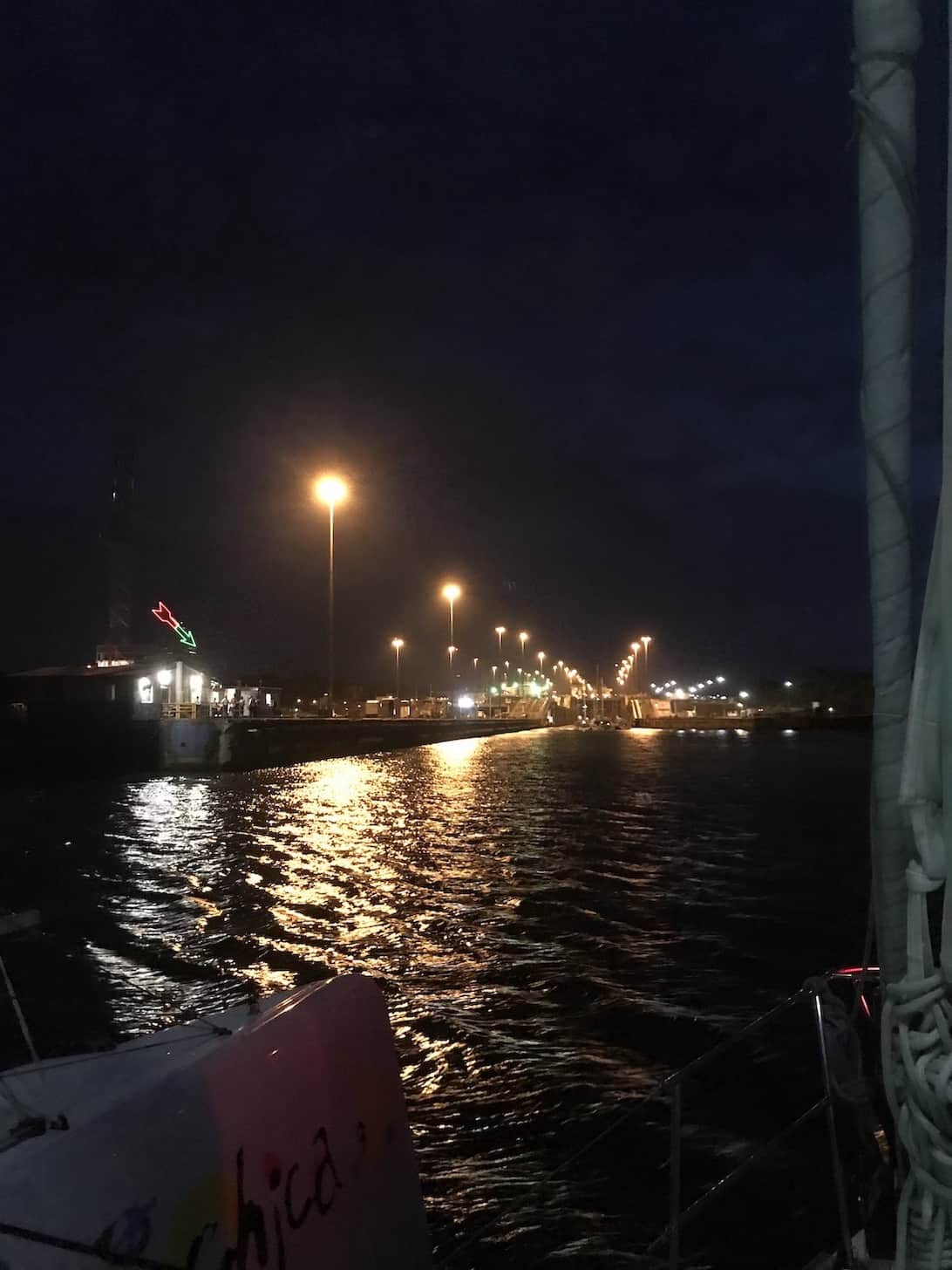
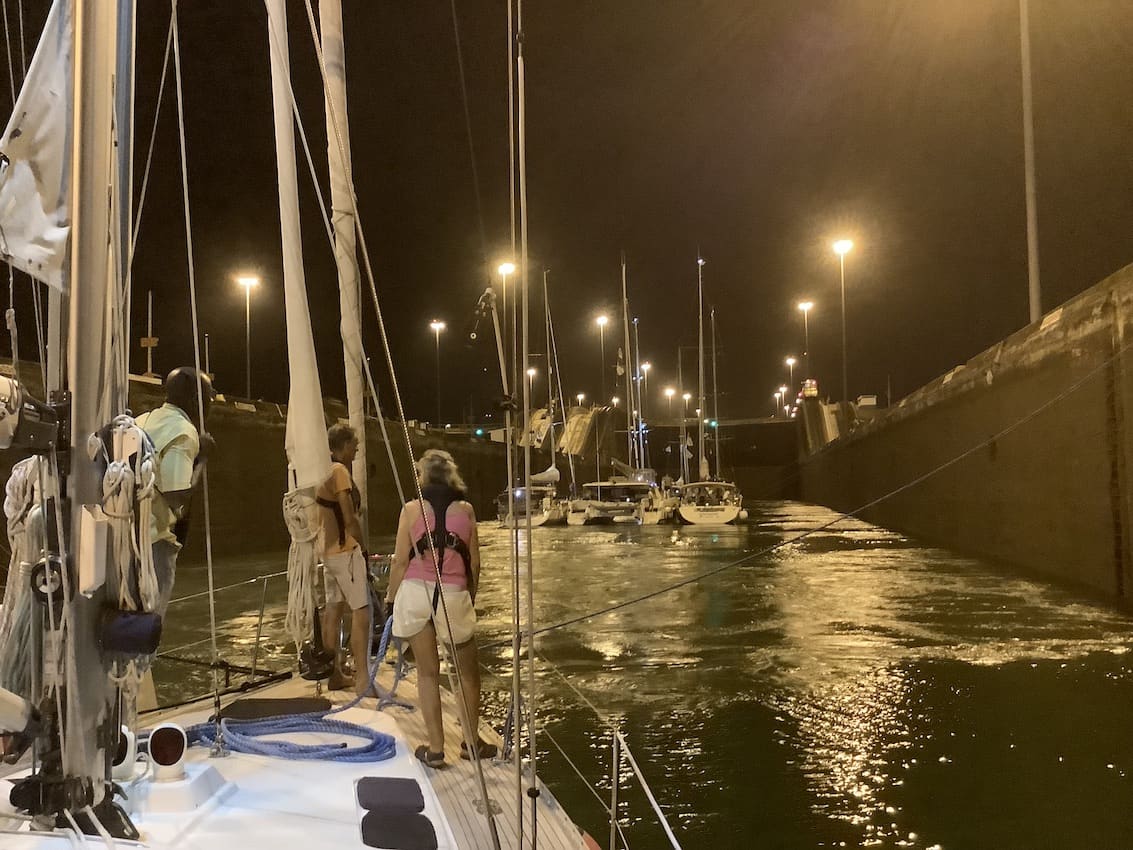
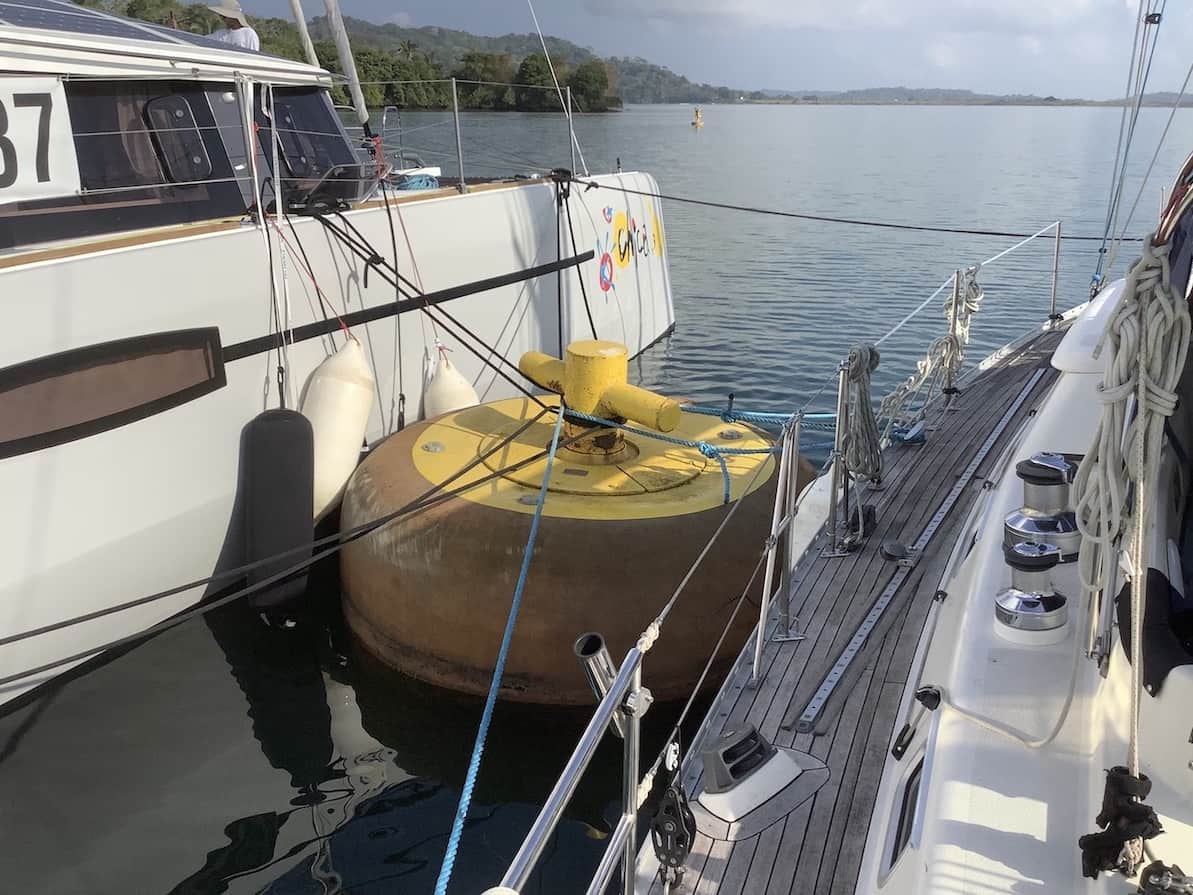
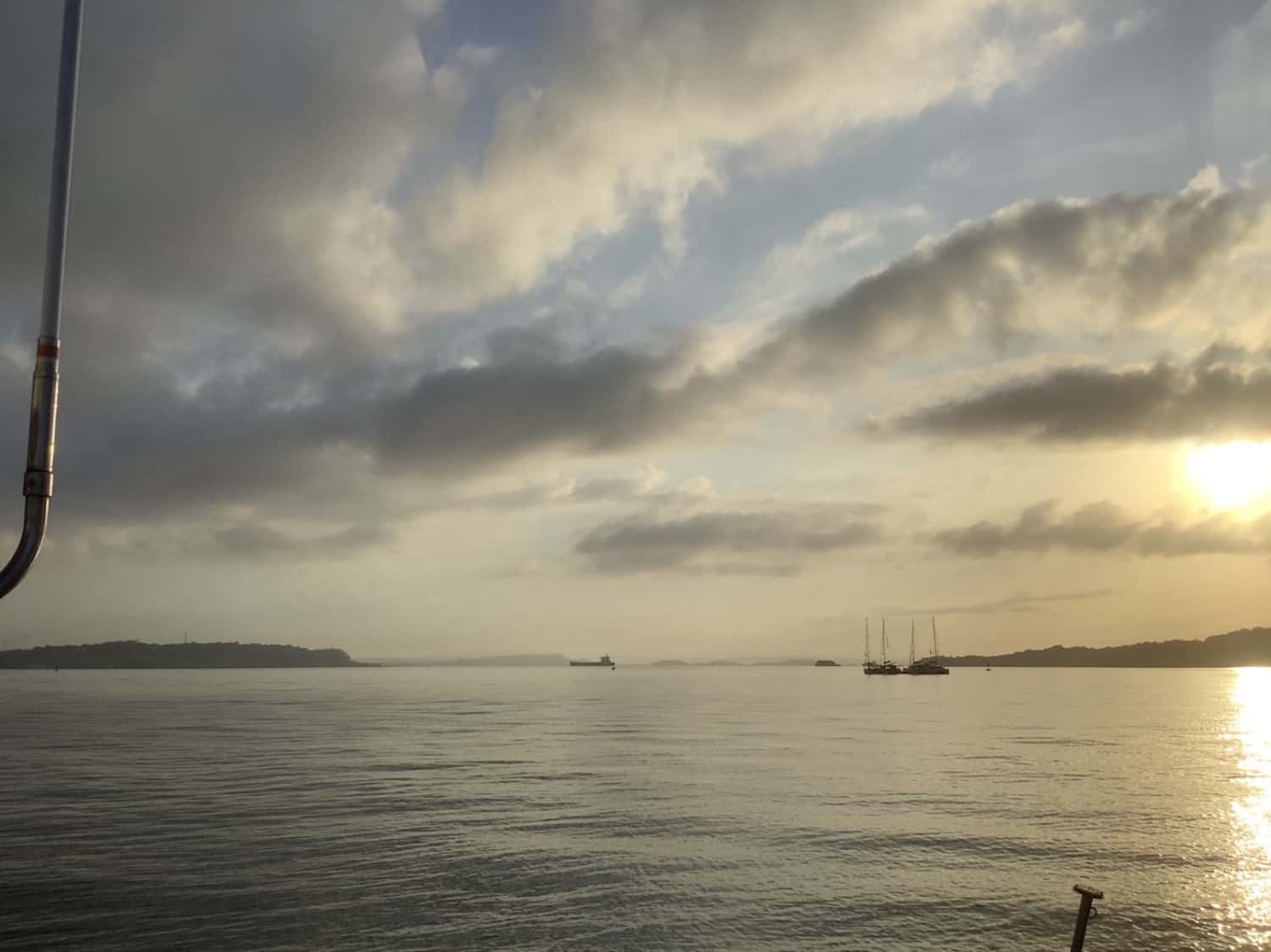
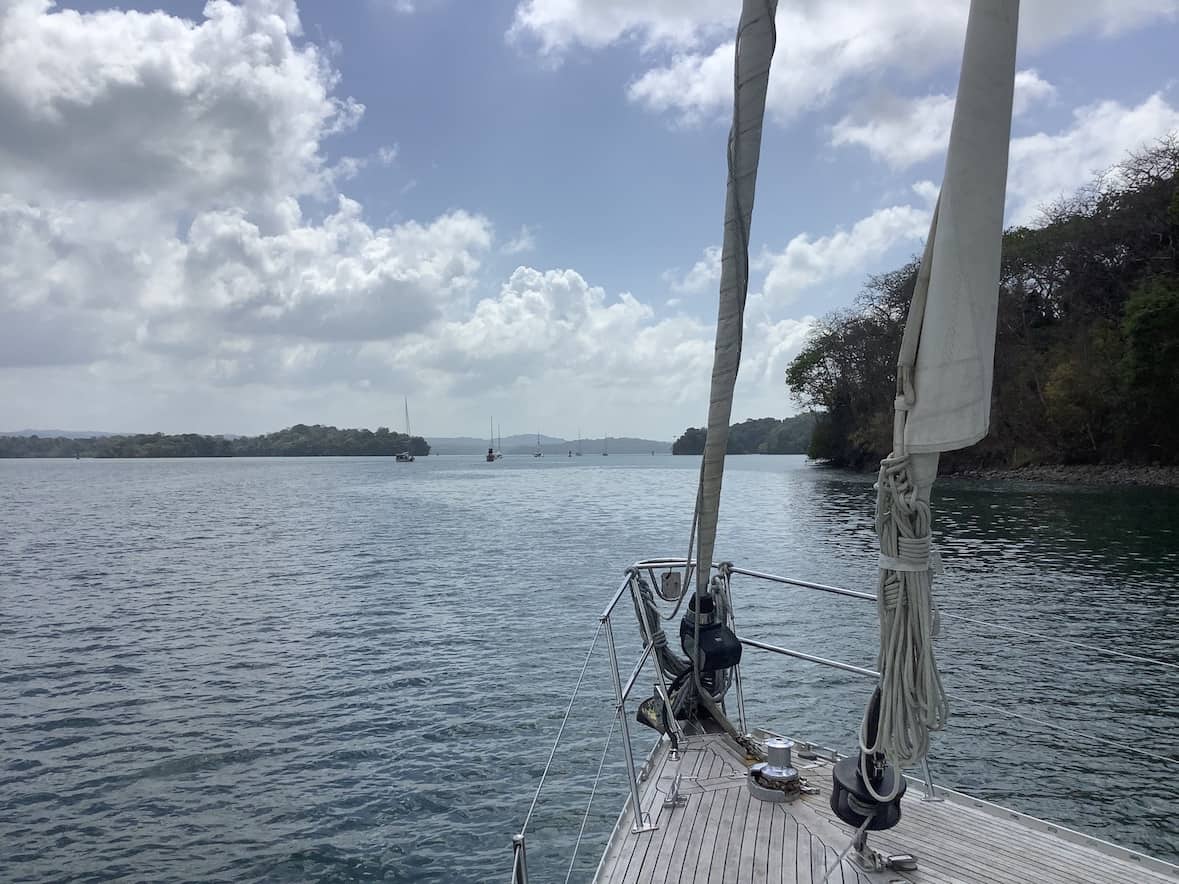
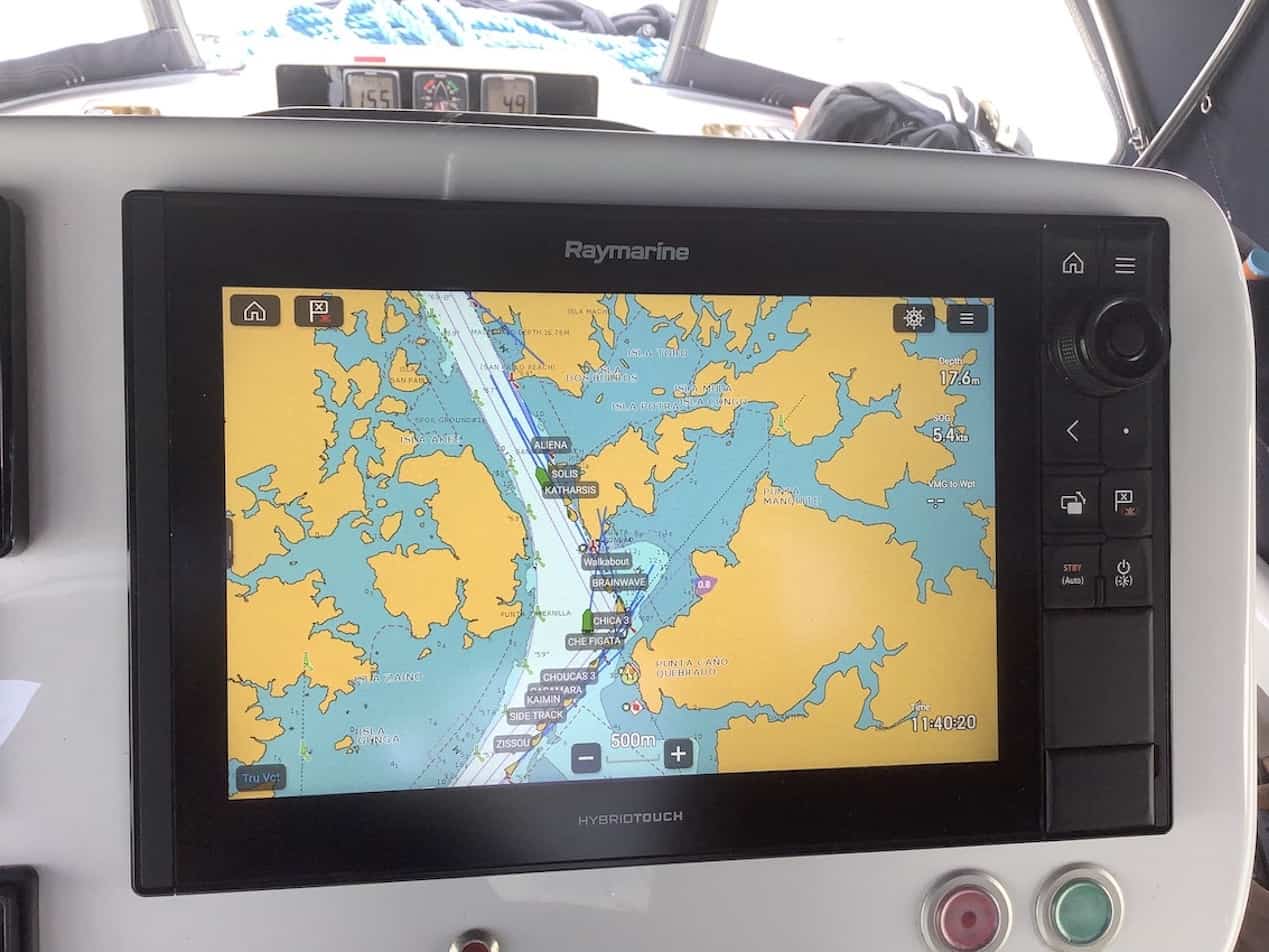
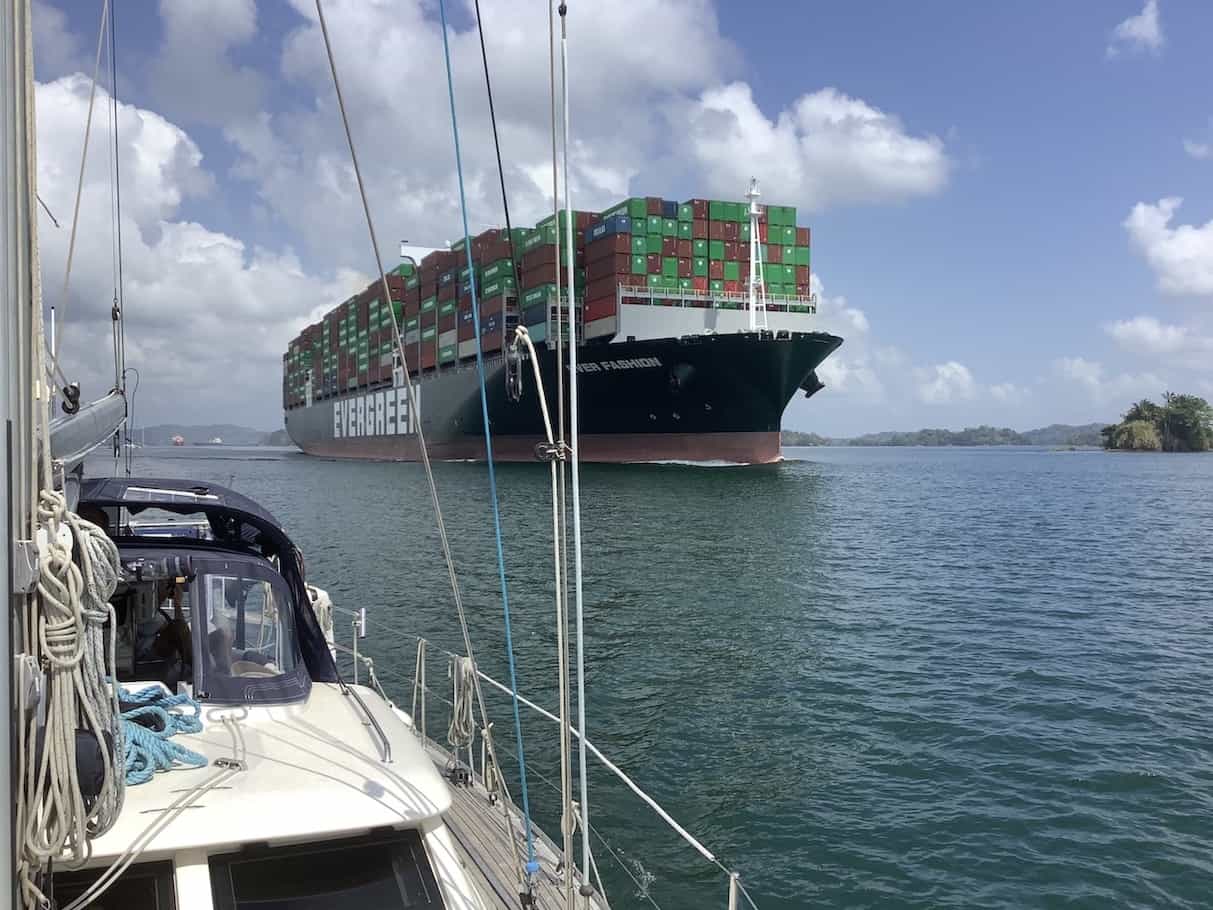
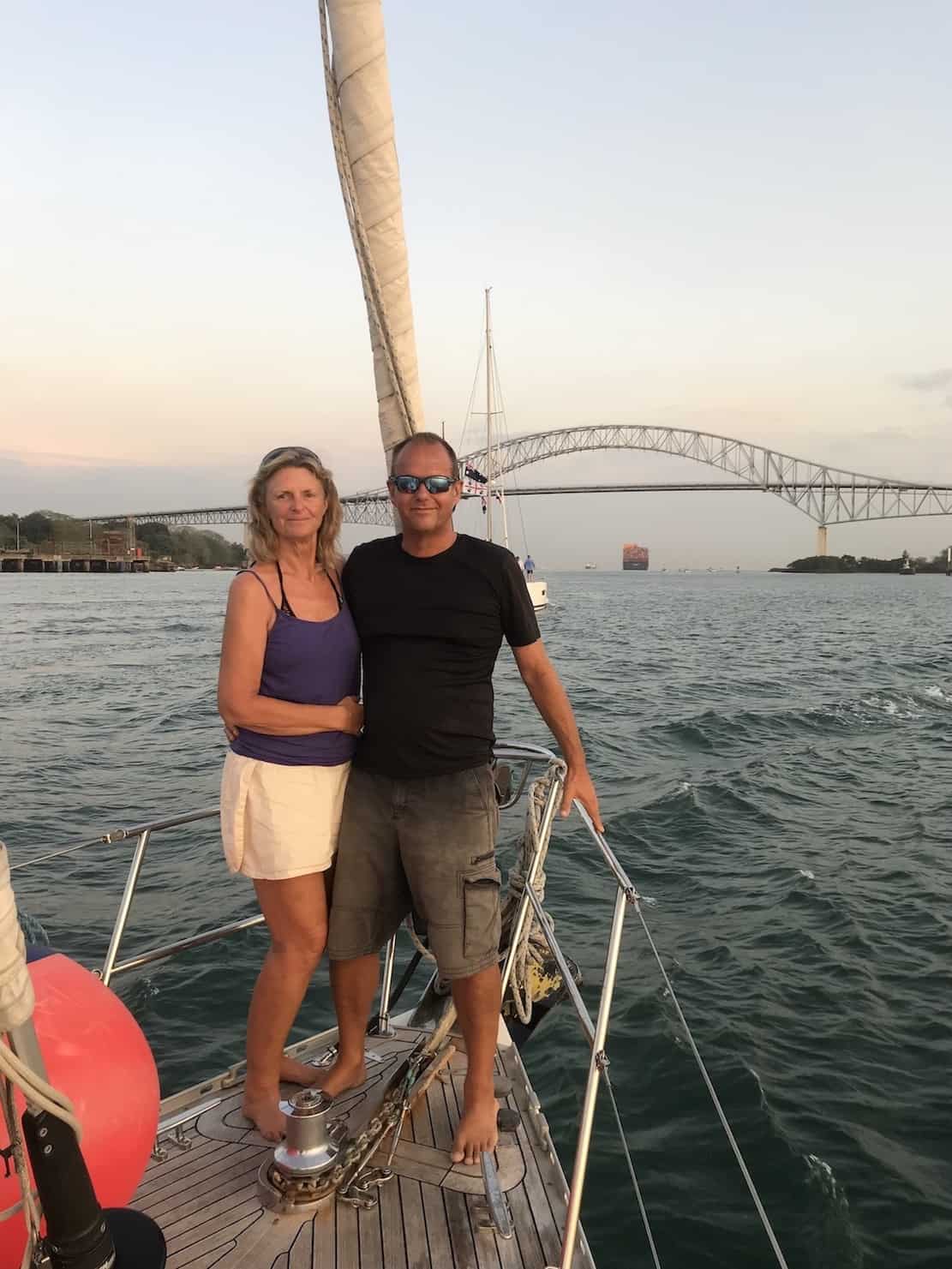
Three abreast through Torksey Lock would give the lock keeper nightmares.
Wow, so glad to hear you had an enjoyable experience 👍😃. We went through on a cruise ship, and that was special, but this must have been ….wow , speechless 👍😃
It certainly was a once in a lifetime experience!!
Definitely it would be a challenge for Torquey, especially as there were 16 boats altogether!
I had absolutely no idea about the locks!! Just thinking Suez but wider!! What an experience. James and daughter had told us you had reached the Pacific. Full of admiration.
It was so fascinating. We had no idea of the scale of it all. It was a huge feat of engineering!
Hope you are both well
Thank you for such a great recount! Happy sailings in the Pacific.
Hi,
Loving the Pacific. We have spent a month in the Marquesas and then three weeks in thew Tuamotus. very different places but both amazing.
Heading to Morea, Tahiti and Bora Bora next!!
Looking forward to catching up in Australia. Should be in Sydney area in December/January. Hoping to do New Years Eve in the Harbour!!
Wow, so glad to hear you had an enjoyable experience 👍😃. We went through on a cruise ship, and that was special, but this must have been ….wow , speechless 👍😃
Gorgeous pictures and amaxing information and history, you need to write a book xx
Hi Shona,
So pleased that you enjoyed it. There was so much more I could have written but I didn’t want to bore everyone! Not sure I have time to write a book….maybe when we get back???